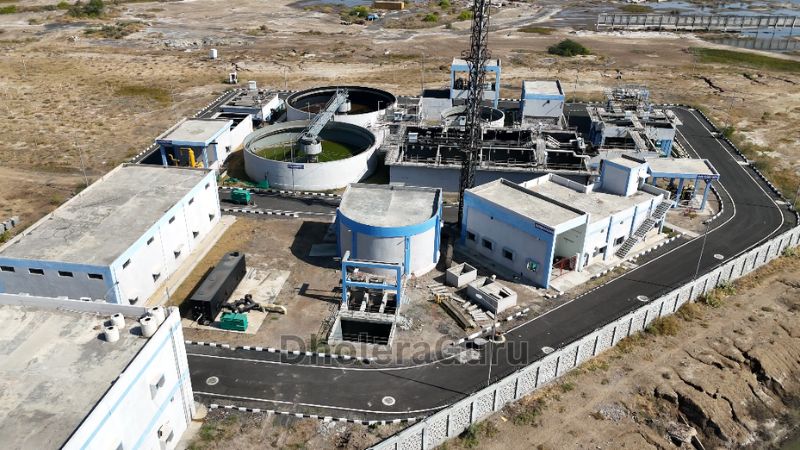The Dholera SIR (Special Investment Region) in Gujarat is symbolic of India’s urban futuristic planning. In addition, one of the most important facilities that emphasizes efficient water usage is the Sewage Treatment Plant (STP). This sophisticated plant not only alleviates environmental issues but facilitates the smart city vision for the region, as well.

Overview of the Sewage Treatment Plant
Contents
The Dholera STP has a total treatment capacity of 10 million liters of domestic sewage per day (MLD). The STP contractor controls the civil works that include design, manufacture and Cl/ Installation (C/I), Testing and C/ Commissioning and listing of the scope of works. The works of treatment plants are conducted to environmental standards that are set by the STP reuse limits compliant to non-potable use. It must pass an operational efficiency test for three months; only after will it proceed to the full functioning phase.
Capacity and Environmental Compliance
The STP’s 10 MLD capacity is enough to effectively treat wastewater from residential, commercial, and industrial activities. Advanced technology has been installed in the plant to ensure that the environmental guidelines will be followed and protected.
Resource Management and Water Reuse
Treated effluent from the STP is harnessed for purposes like landscape irrigation, industrial cooling, and other ancillary services, which aids in minimizing the freshwater requirements. This recycling practice is a very efficient way to optimize it.
Automation and Monitoring Systems
The facility incorporates upgraded and modern automation systems enabling constant supervision of processes to guarantee ideal functional conditions along with performing preventative maintenance. Such systems improve reliability and help reduce operational hazards.
Auxiliary Structures for Water Resource Management
The sewage treatment plant in Dholera SIR is complemented with other structures that together constitute an integrated water resources management system which includes:
- 50 MLD Water Treatment Plant (WTP) is responsible for the clean water needs in the region.
- Master Balancing Reservoir (MBR) and Elevated Service Reservoirs to manage the water supply.
- 20 MLD Common Effluent Treatment Plant (CETP) for treating industrial wastewater.
This system illustrates the integrated thinking that has been used to make Dholera a sustainable and livable city.
Advantages of a Sewage Treatment Plant
1. Environmental Protection: Lowering pollution by making treatment of sewage more effective.
2. Resource Optimization: Decreasing used freshwater through recycling of water.
3. Economic Growth: Facilitating industrial and commercial activities through efficient water management system.
4. Health and Hygiene: Maintaining cleanliness for the safety of residents and site workers.
Conclusion
Dholera SIR Sewage Treatment Plant is one of the most essential components of the region’s advanced infrastructure. By adopting modern technologies and sustainability measures, as well as efficient resource planning, Dholera’s mission of becoming a globally smart city is advanced. This investment in sewage treatment and water management will be crucial for Dholera’s sustainable development as more industries and people choose it.

